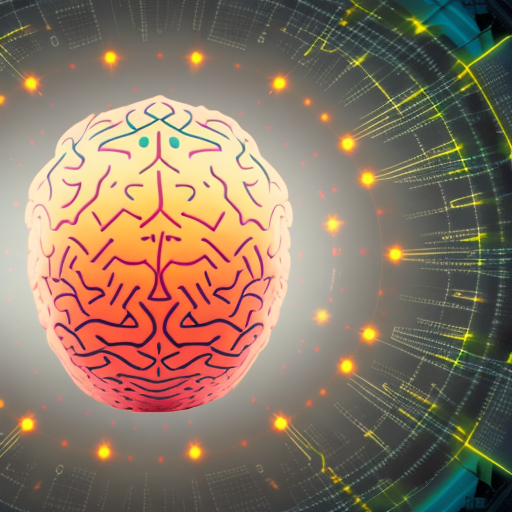
Blog about Science and Mind
The Science of Serenity: Exploring the Impact of Meditation on Brain Waves
On this occasion, the auspicious day Buddha Purnima commemorating Gautama's enlightenment holds immense spiritual significance. This serves as a reminder of the Buddha's profound wisdom and unwavering dedication to alleviating the suffering of all sentient beings. We seek to follow his teachings of compassion, non-violence, and mindfulness.
Our modern world is filled with stimuli that can lead to stress, anxiety, and an overwhelming sense. In response to this, many individuals are turning to meditation as a way to quiet the mind and achieve a state of inner peace. As more people adopt meditation practices, researchers are starting to uncover the science behind how meditation actually impacts our brain waves, leading to these profound transformations. This article will explore the science of serenity and explain how meditation can change your brain waves at will.
Introduction to Brain Waves and Meditation
The human brain is an incredibly complex organ, producing electrical signals that can be measured and analyzed to better understand our mental states. These signals, or brain waves, are generated by the synchronized electrical activity of millions of neurons communicating with each other. Brain waves are typically divided into different frequency bands, each associated with a particular cognitive state or level of consciousness.
Meditation is an ancient practice used for thousands of years to achieve a relaxed and focused state of mind. As researchers begin to study the effects of meditation on brain waves, they discover that this ancient practice has profound impacts on our brain function and overall well-being. In the following sections, we'll delve into the different types of brain waves, how meditation affects them, and how you can harness the power of meditation to change your brain waves at will.
- Delta waves (0.5-4 Hz): These slow, high-amplitude waves are associated with deep, dreamless sleep and unconscious processes. Delta waves are crucial for restorative sleep and the release of growth hormones, which aids in tissue repair and overall health.
- Theta waves (4-8 Hz): Theta waves occur during light sleep, deep relaxation, and meditation. They are associated with creativity, intuition, and emotional connections. Theta waves can also be present during hypnosis and daydreaming.
- Alpha waves (8-12 Hz): Alpha waves signify a relaxed yet alert state of mind. They are commonly found during meditation, light hypnosis, and the transition between waking and sleeping. Alpha waves are linked to open-mindedness, mental coordination, and learning.
- Beta waves (12-30 Hz): These faster brain waves are associated with active thinking, focus, problem-solving, and general wakefulness. Beta waves can be divided into low beta (12-15 Hz) and high beta (15-30 Hz), with high beta waves linked to anxiety and stress.
- Gamma waves (30-100 Hz): The fastest of the brain waves, gamma waves are associated with high-level cognitive functions, such as perception, learning, memory, and problem-solving. They have also been linked to peak performance states and feelings of unity or oneness.
- Increased alpha waves: Many types of meditation, such as mindfulness meditation and transcendental meditation, have been shown to increase alpha wave activity. This can lead to heightened relaxation, improved focus, and increased creativity.
- Enhanced theta waves: Some meditation practices, particularly those that involve deep relaxation or visualization techniques, can promote the production of theta waves. This can result in increased intuition, emotional awareness, and access to the subconscious mind.
- Modulation of beta waves: Meditation can help to balance the activity of beta waves, reducing high beta waves associated with stress and anxiety while promoting low beta waves linked to focused attention and problem-solving.
- Increased gamma waves: Certain advanced meditation practices, such as Tibetan Buddhist meditation and loving-kindness meditation, have been found to increase gamma wave activity. This can lead to enhanced cognitive functioning, peak performance, and a deep sense of interconnectedness.
Understanding the Different Types of Brain Waves
There are five primary types of brain waves, each with a unique frequency range and associated mental state. These include:
The Effects of Meditation on Brain Waves
Meditation has been shown to impact brain waves in various ways, depending on the type of meditation being practiced. The following are some examples of how meditation can influence brain waves:
The Science Behind Meditation and Brain Wave Changes
Researchers are still working to understand the precise mechanisms through which meditation influences brain waves. Some theories suggest that the focused attention and relaxation techniques used in meditation help regulate the brain's default mode network (DMN) activity, which involves self-referential thoughts and mind-wandering. By quieting the DMN, meditation may allow for more optimal brain wave patterns to emerge.
Another theory posits that meditation strengthens the connections between different brain regions, allowing for more efficient communication and synchronization of brain wave patterns. This enhanced connectivity may result in the various cognitive and emotional benefits associated with meditation.
How to Change Brain Waves at Will Through Meditation
The ability to change your brain waves at will through meditation is a powerful skill that can be cultivated with practice. The following steps can help you get started:
- Choose a meditation technique: Select a meditation practice that aligns with your goals and preferences. Mindfulness meditation, for example, focuses on cultivating non-judgmental awareness of the present moment, while transcendental meditation involves the repetition of a specific mantra.
- Establish a regular practice: To see the most significant benefits of meditation, it's essential to maintain a consistent routine. Aim to meditate daily, even if it's just for a few minutes at a time.
- Focus on your breath or another point of concentration: As you meditate, gently bring your attention to your breath or another point of focus, such as a mantra or visualization. When your mind wanders, gently guide it back to your point of concentration.
- Monitor your progress: As you become more adept at meditation, you may notice subtle shifts in your brain waves and mental states. Over time, you'll be more able to consciously influence your brain wave patterns.
Techniques for Achieving Different Brain Wave States
Different meditation techniques can be used to target specific brain wave states. Here are some examples:
- Deep relaxation and visualization: To promote theta wave activity, engage in meditation practices that involve deep relaxation and visualization techniques, such as guided imagery or progressive muscle relaxation.
- Mindfulness and breath awareness: To increase alpha wave activity, practice mindfulness meditation or breath awareness techniques, which help to cultivate a relaxed yet alert mental state.
- Mantra repetition and concentration: To modulate beta wave activity, try meditation practices that involve the repetition of a specific mantra or focused attention on a single point, such as a candle flame or an object in your environment.
- Advanced meditation practices: To promote gamma wave activity, explore advanced meditation techniques, such as Tibetan Buddhist practices or loving-kindness meditation.
The Benefits of Altering Brain Waves Through Meditation
You can experience various physical, mental, and emotional benefits by changing your brain waves through meditation. Some of the most notable benefits include:
- Reduced stress and anxiety: By modulating beta wave activity, meditation can help to alleviate stress and anxiety, leading to a greater sense of calm and well-being.
- Improved focus and concentration: Meditation has increased alpha and low beta wave activity, enhancing focus, concentration, and learning abilities.
- Enhanced creativity and intuition: Promoting theta wave activity through meditation can foster creativity, intuition, and access to the subconscious mind.
- Increased cognitive functioning and peak performance: By increasing gamma wave activity, meditation can support high-level cognitive functions and states of peak performance.
Real-Life Experiences: Stories of Transformation Through Meditation and Brain Wave Manipulation
There are numerous stories of individuals who have experienced profound transformations through the practice of meditation and the manipulation of their brain waves. These stories often involve reduced stress and anxiety, improved focus and concentration, enhanced creativity and intuition, and increased cognitive functioning.
As more people share their experiences, it becomes clear that meditation has the potential to transform our lives in profound ways. For example, one individual may have experienced a significant reduction in anxiety symptoms, making them feel calmer and in control of their life. Another person may have discovered enhanced creativity, leading to a breakthrough in their work or personal life. By harnessing the power of meditation to alter our brain waves, we can tap into our full potential and achieve a greater sense of peace, purpose, and fulfillment.
The way is not in the sky. The way is in the heart.
Conclusion: Embracing the Science of Serenity
In conclusion, the science of serenity involves understanding how meditation can change our brain waves and impact our mental and emotional states. By practicing meditation regularly and experimenting with different techniques, we can learn to consciously influence our brain wave patterns, leading to a range of physical, mental, and emotional benefits. Whether you're looking to reduce stress and anxiety, enhance creativity and intuition, or achieve peak performance, meditation offers a powerful tool for optimizing your brain wave states and transforming your life.
If you're new to meditation, explore different techniques and find a practice that resonates with you. Establish a regular meditation routine and be patient as you work to cultivate the ability to change your brain waves at will. Remember that the benefits of meditation are cumulative and may take time to fully manifest. With consistent effort and dedication, however, you can unlock the full potential of meditation and experience the profound transformation that comes with embracing the science of serenity.
So why not start your journey today? Sit for a few minutes in silence, focus on your breath, and observe your thoughts. With each passing moment, you'll be one step closer to achieving a state of inner peace and discovering the true potential of your mind and body.



Leave A Comments
Your email address will not be published. Required fields are marked *